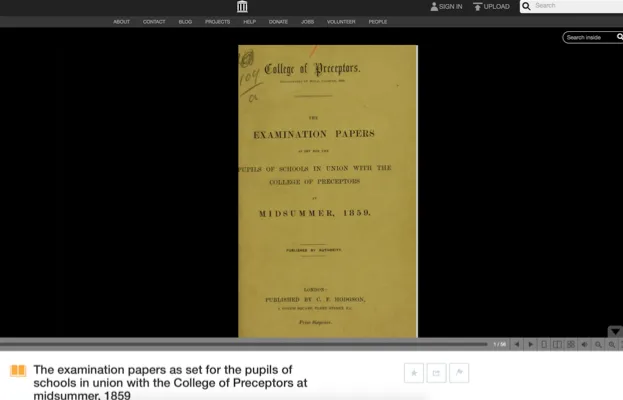This summer, students are taking their school exams, just as their ancestors – for generations – did before them.
The forerunners of modern GCSEs and A-levels originated during Queen Victoria’s reign with the rollout of national tests in the English system of education.
Exams have evolved dramatically over the decades, with huge variance in tests between different types of educational establishment.
But if you know when your forebear took their exams and the kind of school they attended, then it’s possible to work out what testing they experienced.
When the Government launched the earliest nationwide exams in the 1840s, just 60 per cent of children attended school, and only a very small proportion of them were earmarked to participate in the innovation.
Many parents regarded the tests with scepticism. They viewed school as a convenient place they could send their offspring until they were old enough to earn a living doing relatively low-skilled and low-status work, and were reluctant to pay examination entrance fees.
Following their lead, pupils expressed their own dislike of testing, pointing out that it was irrelevant to the farm or factory jobs they were likely to go on to do.
There were exceptions, however. The most hard-working and intelligent children could work as ‘pupil-teachers’, essentially apprentices responsible for educating younger pupils while they received their own secondary education, and study from the age of 13 for the Queen’s Scholarship Examination.
The final test was taken at 18 in more than 4,000 schools nationwide. There were compulsory papers in arithmetic, English and history; places at teacher-training colleges and scholarships awaited those who passed.
Unfortunately the conditions in the schools where the candidates took the exams were not always ideal, and efforts were rarely made to improve the environment: ventilation, for example, was generally poor. In the colder months a smoky, coal-burning stove produced only a little warmth, and when children sat the exams in the summer, classrooms became hot and stifling.
Further state action leading to the provision of exams came about in 1859 when the Science and Art Department of the Board of Trade launched a scheme geared towards technical education.
However, the earliest initiative for exams marketed exclusively towards private schools was taken in 1850 by the College of Preceptors, a learned society of private teachers.
Standard Hill Academy near Nottingham was the first school to be tested. That year, children at least 11 years old sat exams for seven hours on Monday 23 and again on Tuesday 24 December – no doubt making for a very happy Christmas.
The topics were algebra, arithmetic, classics, drawing, English, French, geography, philosophy, scripture, history and surveying.
The exams at Standard Hill are now seen as the earliest prototype of the GCSE, yet the modern style of examining in which uniform papers are distributed en masse was not brought in until 1853.
Between that year and 1867 9,000 candidates were examined by the college.
Were modern exams harder than the ones undertaken by our ancestors? The College of Preceptors' 1859 midsummer paper is available online, so we've chosen some brain-breaking questions to help you compare your knowledge to a Victorian child.

Arithmetic
1. A wedge of gold weighing 14 lbs. 3 oz. 8 dwt., is valued at 514l. 4s.; what is the value of an ounce?
2. If 3000 copies of a book of 11 sheets require 66 reams of paper; how much paper will be required for 5000 copies of a book of 12 ½ sheets?
3. Find by duodecimals the capacity of a cube whose edge is 2ft. 8 in., and prove the truth of the result by vulgar fractions.
English Grammar, Analysis and Composition
1. Mention some connective words which are not conjunctions.
2. Is the definition usually given of the Relative Pronoun applicable to any other pronouns? What is the distinctive characteristic of the Relative Pronouns?
3. Define the Degrees of Comparison of adjectives. Give a list of adjectives which have irregular forms for the Comparative and Superlative Degrees.
History of England
1. Explain the terms Witenagemote, Danegelt, Curfew, Domesday Book, Scutage, Magna Charta.
2. From the deaths of William I. to the accession of Henry VII. eight monarchs assumed the crown of England, to the detriment of the rightful heirs. Name them.
3. Under what Commanders, and when were the Victories of Cressy, Agincourt, Blenheim, Quebec, Trafalgar, Waterloo and Alma gained?
Rosemary Collins is the staff writer of Who Do You Think You Are? Magazine

